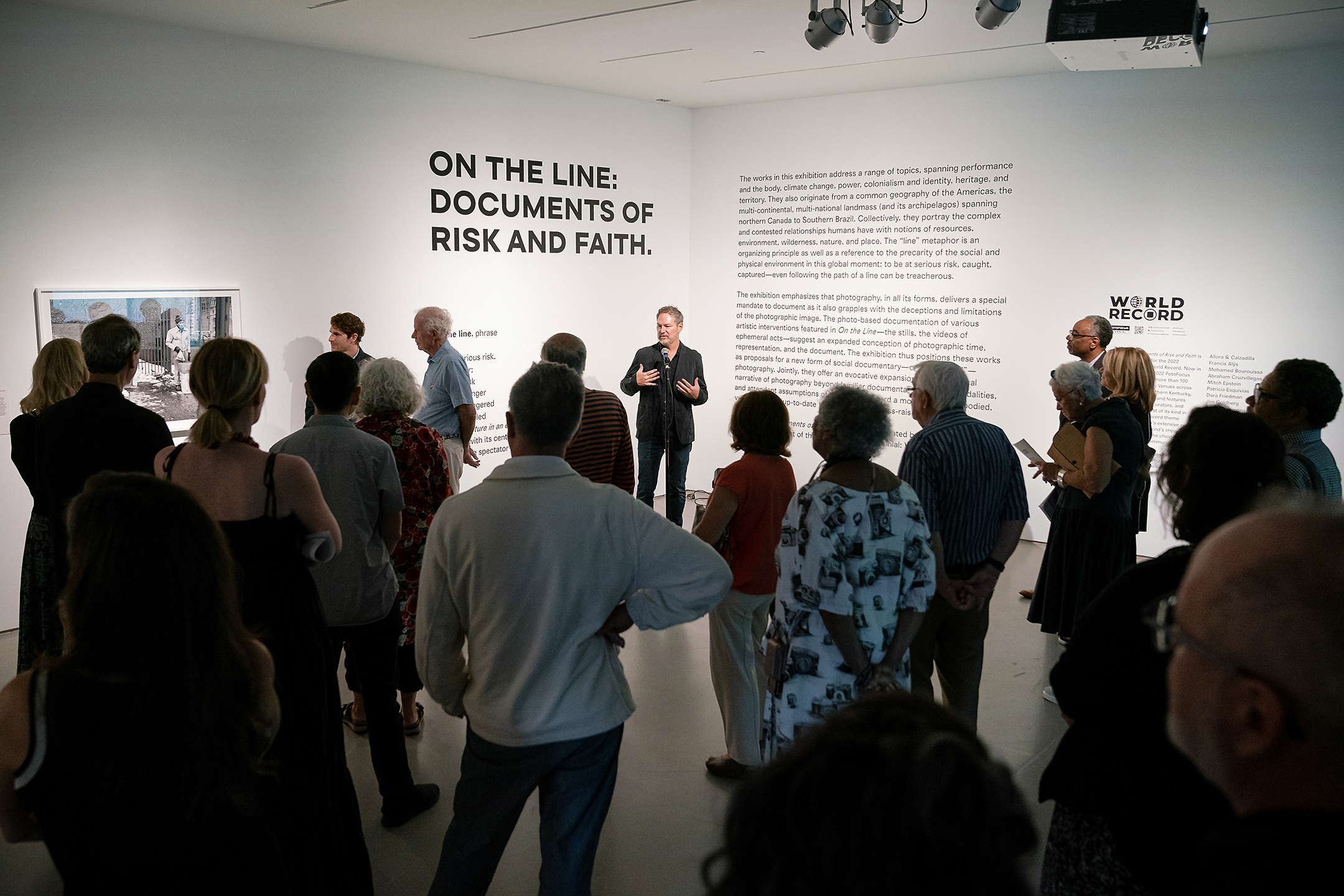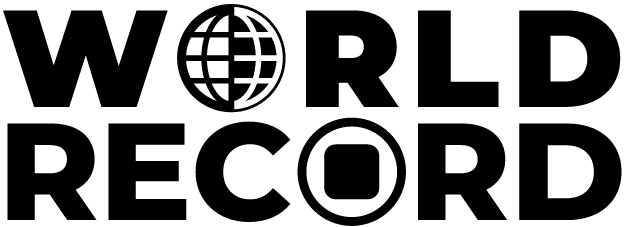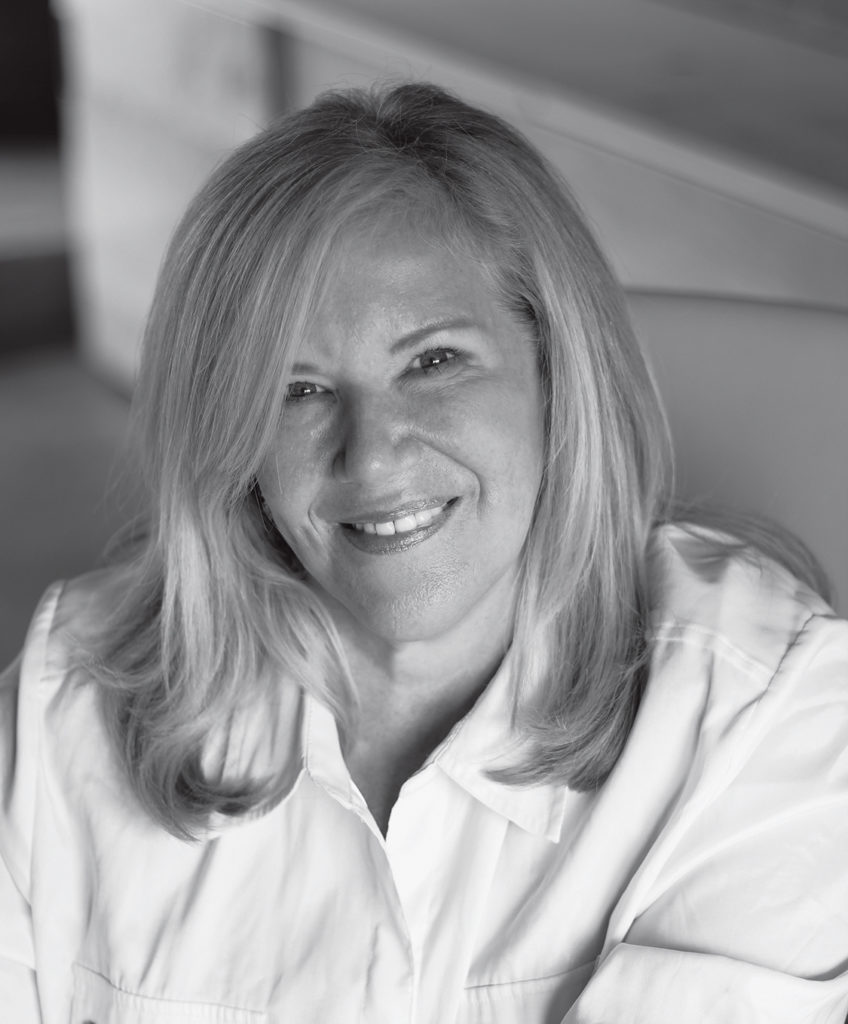2022 FotoFocus Biennial Overview

The largest photography and lens-based biennial in America, FotoFocus is in a category of its own. Now in its sixth iteration, the 2022 FotoFocus Biennial encompasses more than 100 projects at Participating Venues across Greater Cincinnati, Northern Kentucky, Dayton, and Columbus, and features nearly 800 artists, curators, and participants—the largest of its kind in America.
An ambitious collaboration between FotoFocus and the region’s museums, galleries, universities, and non-traditional spaces, the FotoFocus Biennial is a month-long celebration of photography and lens-based art that unites artists, curators, and educators from around the world. The 2022 Biennial features new commissions by artists working internationally and in the Greater Cincinnati region, in addition to new exhibitions and projects curated by the FotoFocus team and FotoFocus guest curators, all centered around the theme of World Record.
The 2022 Biennial theme considers photography’s extensive record of life on earth, humankind’s impact on the natural world, and the choices we now face as a global community.
Many venues are free and open to the public, but the Passport offers free access to exhibitions during the month of October; an invitation to members-only events; and entry into the FotoFocus Biennial Program Week (Thursday, September 29–Saturday, October 8), which features keynote lectures, talks and panel discussions with artists, curators and collaborators, screenings, receptions, and tours.

About the Theme
Each FotoFocus Biennial is structured around a unifying theme. The 2022 FotoFocus Biennial theme, World Record, considers photography’s extensive record of life on earth, humankind’s impact on the natural world, and the choices we now face as a global community. Since its invention, photography has recorded plant varieties, animal species, atmospheric conditions, geologic upheavals, and other nuances of life on earth and the beyond. This mass documentation has enriched our understanding of life but has also contributed to the exploitation of resources. World Record refers to documentation of quantifiable human achievement, as well as its increasing associations of environmental extremes directly related to human impact.
World Record also refers to records, as in breaking records. World records have traditionally been thought of positively as records of quantifiable human achievement, but records have come to be associated increasingly with the extremes of the natural world, such as the hottest year on record, record numbers of animal extinctions, record levels of air pollution, record numbers of hurricanes per season, or rising sea levels, all a direct response to human impact on the planet.
Participating Venues address the theme on a range of topics, including nature and science; exploration; space travel and outer space; climate change and its impact on societies; social lives of human beings within various environments, cultural as well as natural; forms of energy, past and present; the cultivation of natural resources, mineral and animal; and utopian and dystopian visions of man in nature.

Director’s Statement
Just as most every other organization, FotoFocus had to pivot from our original plans through 2020 and 2021. During the last two years we were continually encouraged by the support of our venue partners, patrons, and growing on-line audience. We made the decision to reconfigure the 2020 Biennial and redirected grant support to many of the participating venues: we are relieved by how many of our neighboring art organizations have continued to realize creative community connections. Through these years we reconsidered and revived how our organization can expand our reach in the international lens-based conversation, and we thank you for helping us achieve such goals.
This year’s FotoFocus Biennial is an example of that growth. We have dedicated more resources than ever before in our twelve-year history. Beyond that we have re-doubled our efforts this year to work with our participating venues, collaborating with a record number of 90 venues to present 101 projects. A fitting metric in the year of World Record.
In 2010, the early days of FotoFocus, our primary goal was to build collaborative partnerships. I am happy to say that twelve years later those collaborative partnerships have grown stronger with each Biennial. The “art houses” in the area—the Contemporary Arts Center, Cincinnati Art Museum and Taft Museum of Art—all worked with us from the beginning. The CAM presented an Herb Ritts exhibition from the Getty and placed the Starns installation in the historic monastery in Mt. Adams. Edward Steichen’s work was shown at the Taft and the CAC exhibited Andy Warhol’s Polaroids. The Biennial kicked off with over 50 venues opening in October 2012.
Since that first year, the staff that pulls together every Biennial, Symposium, panel discussion, and blog post has grown and strengthened. I want to thank each member of this team: you have helped build an organization from the ground up.
With growth also comes change. After serving as the founding Executive Director of FotoFocus for the last twelve years, this Biennial will be my last. At the end of 2022, I plan to retire from this wonderful organization, but will remain deeply invested in and an advocate for its continued success. My wish for this October is that you use this catalogue as your personal handbook and find educationally enriching and inspiring photography throughout our region. Enjoy!
Mary Ellen Goeke, Executive Director

Curator’s Statement
There is no definite rule, but a biennial theme should reflect current events in some strong way. What are the political conflicts of a given moment? What are the conversations around culture, social life, humanity? All art is “about” these concerns, in overt or less overt ways. But photography, with its singular connection to the visible world, is arguably the most apt medium for addressing the current state of things. Today, with an appalling war in Ukraine, climate crisis, political and racial divisiveness, and the deterioration of institutions and nations themselves, there is much trouble to address. But there is also much splendor and awe, in nature, physics, and humanity itself. Thankfully, biennials like the FotoFocus Biennial include many artists, exhibitions, and conversations for considering and better understanding the world in which we live.
Again, there is no definite rule, but a photography biennial theme should also address aspects inherent to photography itself. World Record, the 2022 FotoFocus Biennial theme, celebrates photography’s distinct ability to document, to create a record of all aspects of the world, inclusive of the myriad problems mentioned above but also pausing to acknowledge the world’s beauty, mystery, and mercy. Photography is also a democratic medium, devoting equal attention to all visible phenomena. It is thus up to the photographers, hailing from innumerable backgrounds and experiences, to shape a narrative that starts from a unique perspective and reaches toward something universal—something everyone might understand, appreciate, and relate to. As a medium of documentation and, more generally, communication, photography offers a common language for all the diverse inhabitants of this lush and fragile planet. It occasions a chance to look and to feel, to share knowledge and to express empathy, for both personal and collective elevation.
This year’s FotoFocus Biennial, in keeping with past biennials, is a sweeping (if somewhat unruly) attempt at presenting a “world record.” The exploration, depending on how you read the phrase, might be seen as record breaking, offering the largest number of collectively and simultaneously organized photography exhibitions in a single American city (FotoFocus is the largest photography biennial in the country and 2022 is also our largest biennial to date) or, content-wise, as a massive, cumulative record of the world.
There is much diversity on offer and also many commonalities. Several group exhibitions treat notions of history and collective memory as a means of examining who and what we deem worthy to remember and how we go about it. ‘Free as they want to be’: Artists Committed to Memory (National Underground Railroad Freedom Center) ruminates over American racial history and examines the ways different artists approach representing history. Images on which to build, 1970s–1990s (Contemporary Arts Center) asks similar questions, though within the more intimate arena of non-traditional families, who use photography to build personal histories. Craft and Camera: The Art of Nancy Ford Cones (Taft Museum of Art) contributes to the history of photography, specifically photography in the Ohio region, by restoring this important woman photographer to her rightful place in the history of both region and medium.
In addition to the empirical world, the otherworldly is suggested in several exhibitions that interrogate the line between physical and retinal matter by making use of photography’s unique exploitation of light as a phenomenon that can be both recorded and preserved as well as projected and moved, mimicking the life around us. Tony Oursler offers up both his collection of rare and strange archival imagery of subjects having to do with water—mermaids, “blob monsters,” baptisms, holy water—and examples of his own spectral work in a concisely manic show titled Crossing Neptune (Michael Lowe Gallery). Liz Roberts’s car windshields, deinstalled and reassembled as a giant movie screen (CampSITE Sculpture Park), reflect on the afterlife of video documentation, among other things. The Cincinnati Symphony Orchestra approximates Sun Dogs—haloes around the sun—by pairing composers and filmmakers to address ephemeral aspects of the natural world. A further elaboration of the otherworldly may be glimpsed in Ian Strange’s multi-site investigations into notions of home, including treatments of actual Cincinnati homes, on view in Disturbed Home (Art Academy of Cincinnati), which call attention to the social and environmental threats to our understanding of this most sacred space.
And just as the natural world offers continuous and regenerative biodiversity, several shows replicate this dynamic in terms of racial diversity, artistic approach, and geographical and institutional context. On the Line: Documents of Risk and Faith (Contemporary Arts Center) brings together some twenty contemporary artists from the Americas who engage (and document) various forms of risky public performance as a tense and, at times, poetic look at humankind’s existence within natural and manmade environments. In their show titled Weight on History (Contemporary Arts Center), Baseera Khan questions identity against the institutional backdrop of the Contemporary Arts Center, designed by the British-Iraqi woman architect Zaha Hadid. Natural World (Cincinnati Art Museum) devises a similar dialogue with institutional identity, inviting artists John Edmonds and David Hartt along with poet Jason Allen-Paisant into the museum to reflect on nature and naturalness. Finally, These Things Are Connected (The Carnegie) spans geographies to link artists of diverse backgrounds to both form new unions and to question old ones.
These twelve FotoFocus curated exhibitions highlight the expertise and perspective of nearly twenty curators and seventy artists. Combined with an aggregate of 90 participating venues, this may not quite add up to an exhaustive record of the world, but together they make a valiant and distinctly human effort at mapping its lovely and contested territories and describing its fluctuating features.
Kevin Moore, Artistic Director and Curator
FotoFocus Biennial History
Launched in October 2012, the FotoFocus Biennial is a month-long celebration of photography and lens-based art held throughout the Greater Cincinnati, Northern Kentucky, Dayton and Columbus, Ohio region every two years. The Biennial is the largest of its kind in America and has featured more than 2600 artists and participants, and 700 exhibitions and programs throughout its history. The Biennial is centered around a unifying theme and the cooperation of museums, galleries, academic institutions, and non-traditional spaces, in celebration of the FotoFocus Month of Photography.
The FotoFocus Biennial Program Week constitutes the core of the Biennial, establishing the theme and dialogues that unite the broader programming. Featuring keynote lectures, conversations, screenings, and receptions with international participants, the Program is designed to inspire conversations about the world through photography and lens-based art.
2020 FotoFocus Biennial: light&
In lieu of presenting the fifth FotoFocus Biennial, light&, FotoFocus pledged its 2020 Biennial budget to financially support the region’s art community during the coronavirus pandemic. FotoFocus distributed Emergency Art Grants totalling $800,000 to over 100 Participating Venues and Partners that were selected to present as part of the 2020 FotoFocus Biennial.
2018 FotoFocus Biennial: Open Archive
Open Archive emphasized the centrality of photography and lens-based art to modernism, and examined our fundamental need to preserve photographs and to tell stories through their collection, organization, and interpretation. Featuring 90 Biennial projects and a comprehensive film program, the 2018 Biennial also included FotoFocus curated exhibitions with artists Eugène Atget, Berenice Abbott, Karl Blossfeldt, Bruguière, Thomas Ruff, Mamma Andersson, Akram Zaatari, and Chris Engman, among others.
2016 FotoFocus Biennial: Photography, the Undocument
Featuring over 60 exhibitions and over 100 FotoFocus events at Participating Venues, the 2016 Biennial included eight major exhibitions curated by FotoFocus Artistic Director and Curator Kevin Moore exploring the documentary nature of photography, including solo exhibitions of Roe Ethridge, Zanele Muholi, and Jackie Nickerson. The Biennial Program included four days of events, lectures, and screenings.
The Participating Venues took diverse approaches to the theme: Photography, the Undocument, which seeks to break apart assumptions about photography’s documentary character by emphasizing the medium’s natural tendency to distort and reshape the visible world.
2014 FotoFocus Biennial: Photography in Dialogue
The second edition of the Biennial, hosted in October of 2014 and centered around Washington Park, included six original exhibitions curated by FotoFocus, the premiere of the FotoFocus ArtHub, as well as exhibitions by over 60 Participating Venues throughout the region. The FotoFocus featured programming included five days of lectures, panel discussions, screenings, and performances with curators, critics, and art world professionals, all focused on one common theme: Photography in Dialogue. FotoFocus welcomed over 115,000 visitors to the Biennial. #FotoFocus2014
2012 FotoFocus Biennial: People. Places. Photography.
In October of 2012 the FotoFocus Biennial became the region’s first event to bring together over 60 venues to simultaneously present contemporary and historical photography, as well as artistic and educational programing. The inaugural event welcomed 63,000 visitors to the FotoFocus Biennial 2012.
